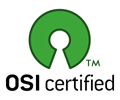Getting Started
The Basics
You have downloaded the Zen Cart® software for an online shopping cart.
Since you're reading this file, you have likely already unzipped the Zen Cart® distribution file and its contents into a folder on your personal computer. If for some reason you have not already done so, unzip the files to your PC now, retaining the file structure within the zip file.
This is a basic guide for new installations of Zen Cart®. If you already have Zen Cart® installed and wish to upgrade from a previous version, please see the Upgrade Instructions and the What's New documentation.
Preinstallation Questions
-
Do you have a domain?
-
If No, stop ... see our Compatible Hosting list and find a fast, reliable web hosting provider who can help you register your own personal domain as well as provide for your hosting needs that meet the Zen Cart® software requirements.
-
Do you have reliable FTP software?
-
If No, stop ... you need to obtain a reliable FTP software package such as FileZilla (free), FlashFXP or another FTP software program to transfer files back and forth from your computer to your webserver.
-
NOTES:
-
"Webserver" is the computer on the internet where you have your domain hosted (See Item 1)
-
Many users have had timeout and other problems when using programs like SmartFTP and CuteFTP. We recommend that you do NOT use these problematic programs.
-
If your web hosting provider provides an FTP program that runs inside your browser, we recommend that you do NOT use that for uploading large amounts of files such as a fresh install of Zen Cart. Those are okay for single-file uploads, but unreliable for several files at once.
-
Do you have a good Text Editor?
-
If No, stop ... you will need a good Text Editing software such as UltraEdit, Notepad++ (free), CrimsonEditor (free), BBedit(Mac), Kedit (linux), or some other type of Text Editor for modifying the files in Zen Cart®.
-
NOTES:
-
Do NOT use CPanel for editing files, nor MS Word or other software designed for fancy writing ... you want a nice clean Text Editor.
-
You can use the Windows Notepad... but this is limited in capabilities and the size of files that it can open and often can cause more harm than good.
-
Do you have access to your webhosting control panel to create a MySQL database and user?
-
BEFORE YOU PROCEED, make sure you have access to a MySQL database, and username/password to that database. You may need to create the database using your webhosting control panel. Contact your web hosting provider for assistance.
-
NOTES:
-
Zen Cart® cannot create the database for you.
-
You need the following permissions on your MySQL user: SELECT, INSERT, UPDATE, DELETE, CREATE, ALTER, INDEX, DROP.
-
On an hSphere host, this would be "dba" access, or at least read/write.
If you have answered "Yes" to ALL four questions, you are ready to go on.
Upload the Zen Cart® Fileset
How do I Upload Files?
Using FTP software, upload the whole Zen Cart® fileset into a directory on your server. Example: /catalog/
We will use "/catalog/" as an example here. You can choose "no" foldername, or something else if you prefer, such as "/zencart", or "/store/" etc
What Folder do I Upload Into?
Each web hosting provider has their own preference in naming folders running a website.
You can have many files that do not even get shown to the public. The ones that are available for access via a browser are usually in a folder called something like:
/home/YOURNAME/public_html
- or -
/var/www/YOURNAME/httpdocs
- or -
/usr/accounts/a/b/YOURNAME/httpd
- or -
- etc, etc, etc -
Basically, in your FTP software, look for a "www" or "public_html" or "htdocs" or "httpdocs" or "wwwroot" folder. These are the common folder names for what is referred to as the "webroot", which is where all website content is served from.
Your Zen Cart files need to be under that folder. If they are not, then you will get "not found" errors ... because the content is not found!
If it is unclear where the publicly accessible files are to be uploaded, ask your web hosting provider for assistance.

